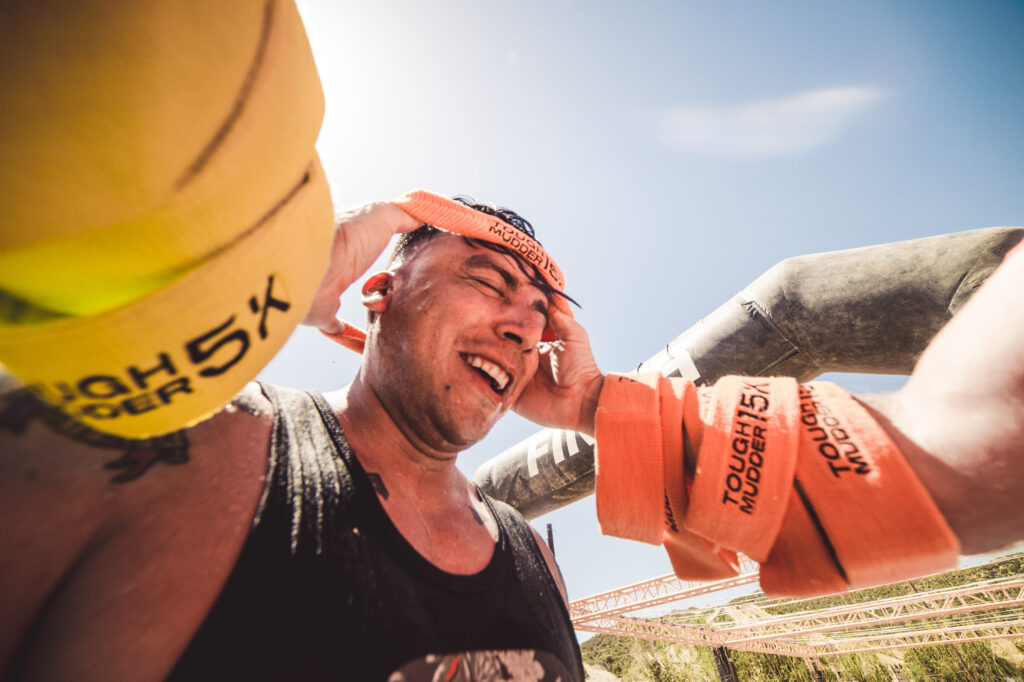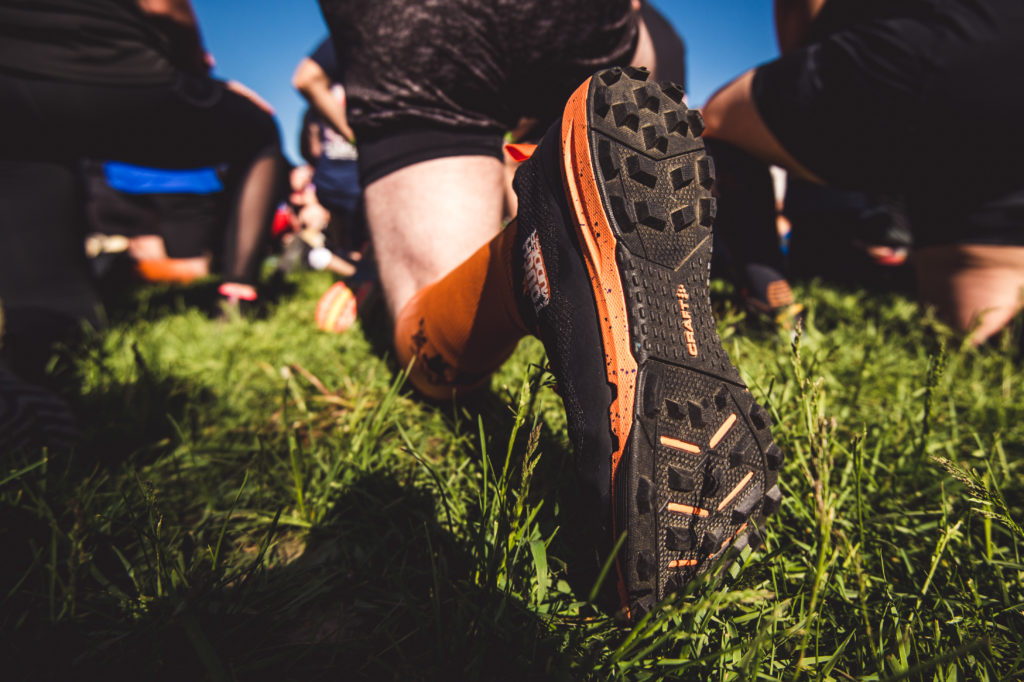You’ve completed 90% of your Tough Mudder challenge – you can quite literally see the finish ahead of you and there are just a couple of obstacles left. You’re almost there. All that training. All that effort. And all that time you’ve spent preparing for this event and you’re within touching distance of your goal. You’re so SO close. These are Mind‘s training tips for the last KM.
How can you make sure you’re ready for what the final kilometre holds for you? The maths isn’t as simple as saying that having 10% of the distance left means you also have 10% of your energy reserves left. For most people taking on epic challenges like a Tough Mudder, by the time they get to the final 10% of their course, they’ve spent 99% of their energy. The last bit needs the most effort and every last drop of energy to do yourself justice.
Training Tips- The Physical Side
You have to consider both the ‘pre-event’ and the ‘during course’ here. First and foremost, you need to train your body to be able to undertake such a huge challenge. Whether you’re taking on your first ever Tough Mudder or you’re preparing yourself for the World’s Toughest Mudder, the training that you put in during the few months before the event will determine how well you are able to perform on the day. The better the training block, the more your body can handle during the event.
What your training should look like will depend on a number of factors, including:
- The event you’re taking part in
- Your starting level of fitness
- Your target for the event (i.e. do you have a time in mind, or just want to finish?)
- How much time you have available to invest in preparation
We have some great training plans available, so we won’t go into exactly what training should look like. Instead, let’s consider preparing only for the final kilometre: what can you do, in training, to mimic the demands of the end of the course?
Training for obstacle races isn’t as straightforward as preparing for a running event. You use all of your body in varying ways across the course and so it’s not just your legs that might give way (top tip, you can see the obstacles you might face.)
When you are sent an event course map, take a look at the obstacles you will face in the last parts of the course. Think about the muscles needed to overcome those obstacles as they’re the ones you need to focus on. You can then schedule your training to include some ‘pre-exhaustive exercises’. Put simply, this means focussing on specific muscle groups to tire them out sufficiently, before putting them through some isolation work to make the muscle continually contract. If this is incorporated correctly, the muscle’s endurance will improve over time.
That all sounds really complicated but actually the concept is really easy. Let’s give two examples… One for your legs and one for your chest and shoulders.
Legs
The pre-exhaust here is:
10 x body weight squats then 10 x lunges then 10 x tuck jumps. Repeat this routine for five minutes, taking as few breaks as you can.
When you’ve completed that, lower yourself into a squat and hold that position for as long as you can – focus your mind and Do. Not. Quit. When you finally can’t do any more, have a 30s break and repeat the squat hold. Repeat this 5 times.
Chest and shoulders
The pre-exhaust here is:
5 x normal press ups then 5 x tricep dips then 5 x shoulder press ups. Repeat for five minutes, taking as few breaks as you can.
When you’ve completed that, hold press up position for ten seconds and then lower yourself to the floor as slowly as you possibly can. Repeat this 5 times.
The ‘during course’ part is critical and simple, really. Don’t overcook it early on. Pacing is so unbelievably critical when it comes to races and events. Flying out of the blocks feeling like you’re invincible will last the best part of three minutes and after that you’re hanging on for dear life.
There is a very simple concept that states ‘you can’t recover from a fast start’. If you push your heart rate too high, too early, you’ll build up lactic acid in your muscles and the oxygen needed to help them recover won’t be delivered quickly enough.
If you have a course plan and you can maintain a steady pace throughout the event, you’re infinitely more likely to get to the final km with not only energy in the bank, but time available to take a breath and go into battle.

Training Tips- The Mental Side
The often forgotten but incredibly important part of preparing for the final kilometre is your mind. When you’ve absolutely buried yourself and have next to nothing left to give, physically, you need to dip into your reserves to get you through. If your brain is in gear and you’re strong minded, you’re far less likely to give in.
Just like with physical preparation, the mental bit is split into ‘pre-event’ and ‘during the course’. Before the event there are a number of things you can do to get ready. The most important of these is visualisation and understanding the course. If you know the obstacles (see link above) and you know the course, you know what’s coming.
Take some time in the week leading up to the event to make a game plan and consider what you need to do at each obstacle to overcome it quickly and efficiently. Identify your weaknesses (don’t be scared of them), and consider what you can do to ensure they’re minimised when you get to the associated obstacles. Rely on others? Take a bigger run up? Have your supporters nearby shouting for you? Whatever it is, prepare prepare prepare.
That Last KM Inspiration
During the course, you need to arm yourself with your cues to make sure you don’t give up. As well as having the game plan in your mind, set up some mental triggers you can rely on when things get tough. It could be that you’re raising money for an incredible charity (hello Mind). Or are you trying to inspire someone to face their own challenges.
Whatever it is that inspires you to not give up, use it. Chrissie Wellington, the undefeated Ironman World Champion used to write inspirational quotes on her forearm in a marker pen. And other athletes have carried notes to themselves written by loved ones. Whatever your reason to run a Tough Mudder event, arm yourself with it and use it to help you overcome the obstacles – both physical and metaphorical.




